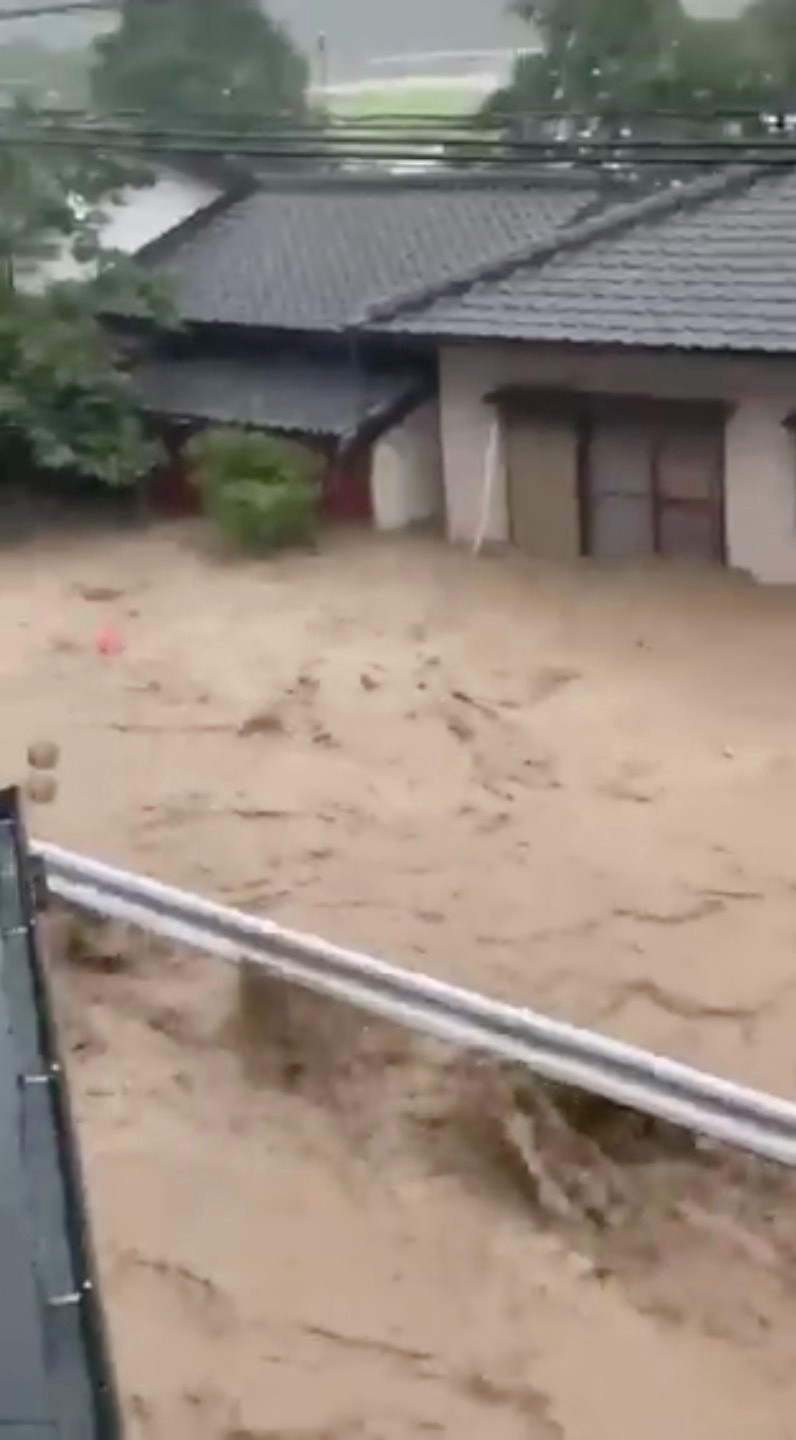
Thirty-five people were confirmed or presumed dead due to flooding and landslides caused by unprecedented torrential rains in southern Japan on Saturday.
Rescue operations were delayed due to high levels of floodwaters and the risk of more mudslides. Power and communication lines were disrupted due to the flooding, further delaying the search and rescue operations.
More than 33,000 phone lines were disconnected, as per the report of Nippon Telegraph and Telephone West Corp. Outages in Japan's top three mobile carriers were reported, and internet services are also interrupted.
Among the victims are 14 patients in one nursing home, which flooded heavily after the nearby river overflowed its banks. Fifty (50) more residents and 30 caregivers were rescued on Sunday by boats.
Approximately 2,000 households remained isolated in eight municipalities as more than a dozen people are missing as of Sunday.
Areas along Kuma River were inundated with waters, submerging houses, buildings, and vehicles up to resident's roofs. Mudslides damaged some homes, prompting residents to climb rooftops and waving at rescuers for help. One bridge along the river was washed away.
The words "rice, water, SOS" spelled on the ground were seen as a helicopter flew over Kyodo.
Japan Times reported of Naruma Kawano, 78, who lived with her disabled husband in Kuma who dove out into a window to escape as floodwaters reached up to their necks on the second floor of their homes.
"I saw large trees and parts of houses being washed away and heard them crashing into something. The air is filled with the smell of leaking gas and sewage", according to Haruka Yamada, a resident of Ashikita in Kumamoto prefecture.
In Kumamoto prefecture, more than 4,650 homes had no power as of Sunday afternoon, Kyushu Electric Power Co. reported.
The prefectures of Kumamoto and Kagoshima were hit the most, as Japan Meteorological Agency reported that such rainfall has never happened in the region before, with rainfall measuring 4 inches an hour occurred at one time. Residents, estimated to be more than 200,000 of these worst-hit prefectures were ordered to evacuate on Saturday. Authorities deployed 10,000 soldiers to help rescue the residents.
Aljazeera reported that many people opted to stay in their homes for fear of contracting coronavirus in shelters as evacuation is not mandatory. The official, however, assured evacuees that shelters were equipped with safety measures such as the installation of partitions to curb the spread of coronavirus.
The Meteorological Agency reported that Kumamoto had a total of 20 inches of heavy rainfall from Friday to Saturday. Sixteen (16) inches were recorded in Kuma, Yunomae, and Amakusa.
The heavy rainfall is due to a normal frontal boundary called the Mei-yu (or Baiu) front. Meiyu front brings the moisture northeastward through eastern India from the Indian Monsoon. The front hits Southern Japan every June and July, bringing with heavy rains and mudslides.
Heavy flooding and typhoons have battered Japan in recent years, leaving the mountainous areas prone to mudslides and flooding. Over the years, hundreds of lives have been taken by storms, and climatologists point out that global warming has exacerbated the problem.
© 2025 NatureWorldNews.com All rights reserved. Do not reproduce without permission.





